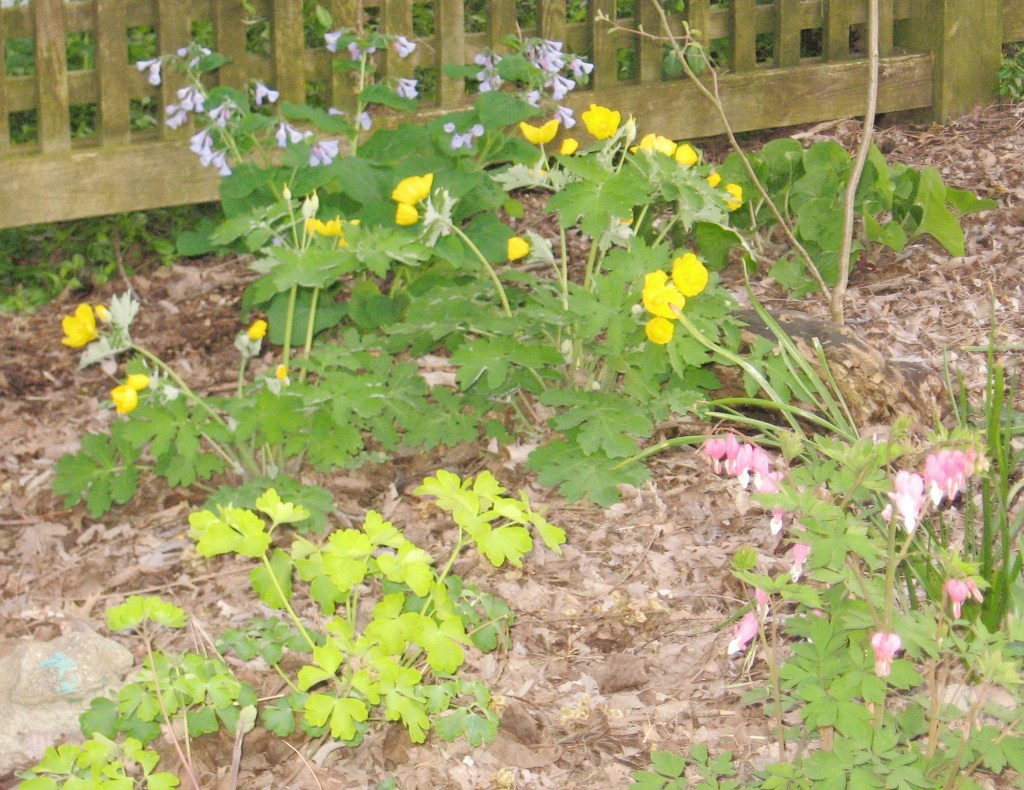Natural Gardening: A plea for untidy gardens
Published 6:22 am Wednesday, October 17, 2018

- Photo by Susan Jonas By early spring, a foot of autumn leaves piled on planting beds in the fall has decomposed to a thin layer. Spring wildflowers emerge through the humus and leaf litter added to the soil by rotting leaves. Virginia bluebells, celandine poppies, columbines, and bleeding heart thrive in this imitation of a forest floor.
By SUSAN JONAS
Garden Club of Danville
One cold day last winter I glanced out the window to see a curious sight in my garden. The dead leaves covering a planting bed seemed to be boiling. On a windless day leaves were churning, swirling and flipping in the air near the ground. A closer look revealed the source of this upheaval to be dozens of robins energetically scratching in all directions as they searched for worms and insects under the protective blanket of fallen leaves. My autumn laziness was vindicated.

Betty Hall Photography
A garden left natural for the winter need not look like a messy brush pile. The Lexington garden of naturalist and photographer Betty Hall is beautiful in all seasons, and home to myriad creatures.
Trending
By October, I’m ready to put away my garden tools for the year. Sometimes this inertia hits as early as September. More industrious gardeners wear themselves out tidying their flower beds, cutting back dead foliage, raking the beds smooth and maybe spreading a thick layer of mulch. I have never been an orderly gardener, so the recent trend of leaving the garden wild for the winter is just my style. Cleaning up can wait for the energy and enthusiasm of spring.
Year by year, the creatures that share my garden have been teaching me the value of an untidy garden. An unkempt garden offers more than food for the birds. There are butterfly chrysalises and moth cocoons clinging to those dried flower stems. Other beneficial insects like ladybugs, lacewings, and parasitic wasps spend the winter in the hollow stems of old flowers. Most species of native bees or their fertilized queens hibernate underground in winter. Pulling up dead annuals may expose these bees to bitter cold, and a thick layer of heavy mulch could prevent them from emerging in spring. If you want to clear away dead annuals, cut them off at the ground and leave the roots in the soil to decompose over the winter. Better yet, gather up the stems and pile them loosely in an out of the way spot.
We no longer throw out the smaller branches that fall from our trees. They are collected into a brush pile in the back corner of the yard. The decomposing wood of a good brush pile provides insects for the birds, and many small animals hide there from predators or shelter from wind and snow. When I tossed an armload of twigs onto the pile the other day, a rabbit ran out. It was encouraging to see a wild creature in the middle of the city.
Instead of purchasing mulch for the beds in fall, we pile a thick layer of dead leaves on the beds and under trees and let nature do its thing. My intention is to have the shade garden look and function like the floor of a forest. Shredding the fallen leaves with the mower before raking them into the beds helps them settle. In late fall the leaves are piled almost a foot deep. By spring they have decomposed to a thin layer less than an inch thick. Just think of all the nutrients those rotting leaves have provided at no cost, not to mention the tilth this organic matter adds to the soil.

Betty Hall Photography
The cocoon of a beautiful cecropia moth looks just like a dried leaf clinging to a bare stem in autumn. By cutting off and discarding stems of dead or dormant plants you risk losing the insects sheltering there for the winter. Either leave the stems standing or pile them loosely out of the way.
If you want to know what a forest floor looks like, take a hike through the Central Kentucky Wildlife Refuge in Forkland. Its woods and meadows are a prime spot for studying how nature designs and maintains a landscape. The Garden Club of Danville is a longtime supporter of the Wildlife Refuge and several members volunteer there. The club donated funds for a sign at one of the meadows describing the life-cycle of Monarch butterflies. Birds and pollinators of all kinds are abundant there, providing an excellent example of the habitats that attract them.
It takes more than pretty flowers to bring butterflies and bees to your garden and keep them there. You have to provide the food, host plants, and nesting or hibernating sites they require. Caterpillars and other bugs will be irresistible food for the birds that flock to your garden, attracted by all the insects. Don’t worry about losing too many butterfly caterpillars. Plenty of them will escape the birds. In a well balanced organic garden, nature keeps everything in check. Let’s hear it for messy gardens this fall!






